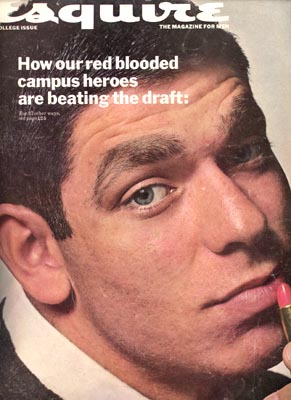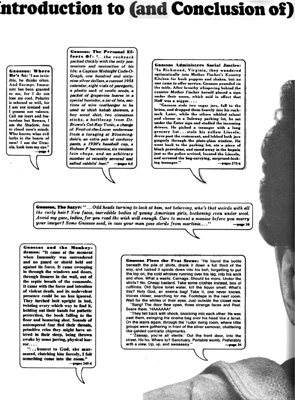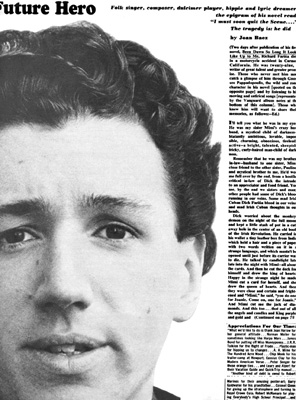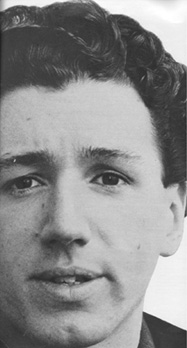
|
David Hajdu tells us in Positively 4th Street that Fariņa had been
scheduled to write an essay for Esquire's annual College Issue before he died.
Upon Fariņa's death, the editor at
Esquire asked Thomas Pynchon to write an article on Fariņa to fill in the
scheduled slot, but Pynchon considered the idea exploitive. The editor then appealed
to Joan Baez, who wrote an affectionate essay on her memories of Fariņa. A tacky and non-sensical
title, "Introduction to
(and Conclusion of) of Future Hero," was probably added by Esquire and had
little to do with Baez's essay, which was a highly personal reminiscence far
removed from the cult status Fariņa attained briefly after his
death. The editors also added the breezy, mock-solemn blurb,
Folk singer, composer, dulcimer player,
hippie and lyric dreamer, the epigram of his novel read, "I must soon quit the
scene..." The tragedy is: he did.
The article began with a flashy two-page
spread, with a huge picture of Fariņa's head
emitting comic-book style word balloons filled with soundbites from the
novel. Unfortunately, Esquire was such a large magazine back in the sixties (13" by
10") that the pages wouldn't even fit on my scanner. To make matters worse, the
huge picture of Fariņa's head is right in the middle of the spread, split by
the spine of the magazine. So this is the best I can do:
|



